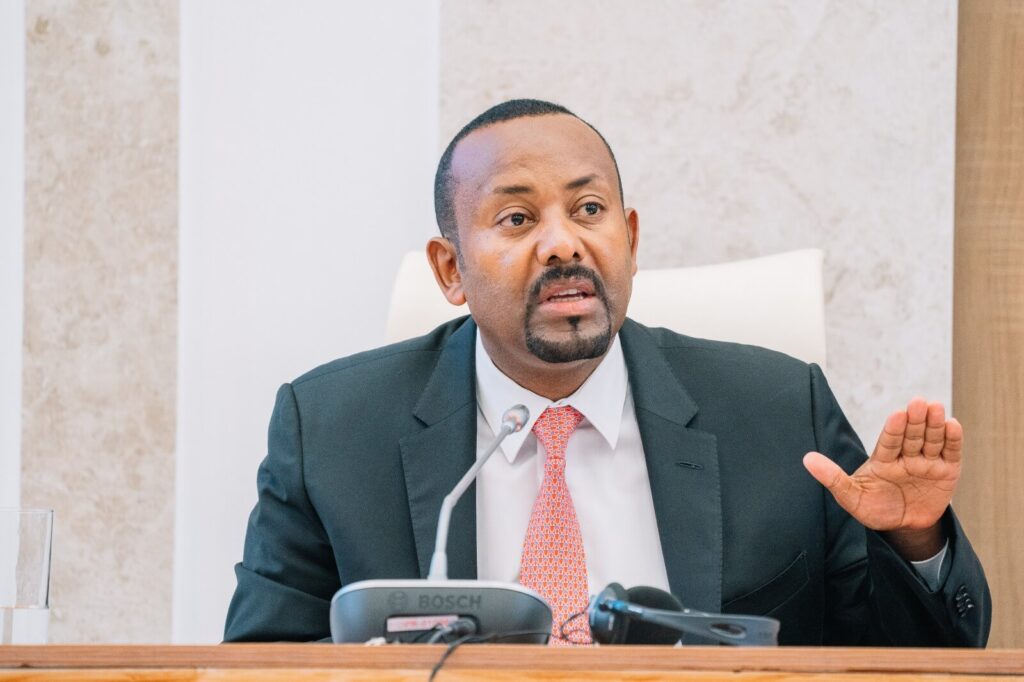Ethiopia’s domestic debt skyrockets, raising concerns over government borrowing practices
Addis Abeba – Despite the government’s efforts to curtail borrowing, Ethiopia’s public debt is experiencing a rapid increase and shows no signs of slowing down. The latest debt bulletin published by the Ministry of Finance last week reveals a concerning 6% surge in public debt since June 2022, resulting in a staggering $60.6 billion by the end of March 2023. These escalating figures have raised concerns about the country’s overall economic stability and financial well-being.
The majority of the public debt is held domestically, accounting for 53.5% of the total, while external debt makes up the remaining 46.5%. Both the local currency and USD-denominated debt obligations have been mounting. Over the specified period, domestic debt witnessed a significant increase of 14%, soaring to an astonishing 1.7 trillion birr by the end of March 2023. Equally troubling, domestic debt denominated in USD rose by 10%, reaching a staggering $32 billion.
On the other hand, there was only a minimal one percent increase in external debt during the same period, bringing the total to $28.2 billion. The latest debt bulletin highlights that the main reason for the decrease in overall external debt disbursement is the lack of new loans obtained by state-owned enterprises (SOEs) in the past four years, with the exception of Ethiopian Airlines.
Tewodros Makonnen (PhD), a country economist at the International Growth Center (IGC) Ethiopia, believes this is not surprising. His observation is based on the fact that Ethiopia has had a “high risk” debt distress rating since 2020. As a result, the major funding sources for the country, like the Bretton Woods institutions, have shown less interest. Additionally, the civil war in Tigray and neighboring regional states has also contributed to the reluctance of Ethiopia’s creditors to engage in debt treatment talks.
Despite the establishment of a creditors’ committee to review Ethiopia’s application under the G20 framework agreement, progress has been slower than anticipated. Government officials argue that this has restricted Ethiopia from benefiting from the G20 framework agreement, which could potentially improve the country’s debt distress rating from “high risk” to “moderate risk.” Two months ago, Julie Kozack, the spokesperson for the International Monetary Fund (IMF), stressed the importance of receiving unequivocal commitments from development partners and securing financing assurances from creditors through the G20 common framework in order to fund any program.
Unlike external sources of borrowing, there are few limitations on the government’s ability to raise funds locally. Currently, 40% of the total domestic public debt is accounted for by SOEs, with the federal government holding the remaining 60%. The growing debt accumulated by SOEs, primarily due to investments in large-scale projects, has been a cause for concern among policymakers since 2018. This accumulation of debt has even led to a balance of payments crisis, as highlighted in the Ministry of Finance’s 2019 debt bulletin, which sheds light on the alarming nature of the public debt situation. In 2019 alone, SOEs owed a staggering amount of ETB 846 billion.
Prime Minister Abiy Ahmed acknowledged the burden of the public debt during his recent appearance in parliament, mentioning that when the current administration took power, the public debt constituted around 59% of the GDP. The ratio has now decreased to 38%, which the Prime Minister considers a significant achievement by any standard.
Experts agree that the country’s public debt remains sustainable as long as it stays well below the recommended threshold of 50%. However, concerns have been raised about the long-term sustainability of the country’s debt, primarily due to the increasing reliance of the federal government on domestic borrowing. An macroeconomist with over two decades of teaching experience at Addis Ababa University, who spoke to Addis Standard on the condition of anonymity, warns that the substantial amount of domestic debt could hinder the country’s ability to allocate funds to critical areas such as infrastructure, healthcare, and education. “As more resources are directed towards debt repayment, the available pool of funds for driving developmental projects diminishes.”

To verify the macroeconomist’s assessment, one can analyze the 2016 Ethiopian fiscal year budget. The approved budget by the parliament amounts to a total of 801 billion birr. Within this budget, 71.5% (573.4 billion birr) is allocated to recurrent and capital expenditures. The highest portion of this allocation is devoted to debt servicing, accounting for 28% of recurrent and capital expenditures. Following debt servicing, road infrastructure receives 68.4 billion birr, and education receives 57.8 billion birr. In the previous year, the government spent 125 billion birr on debt servicing.
Despite efforts, Ethiopia, a heavily indebted nation, has increasingly relied on domestic borrowing to bridge its financing gaps in recent years. The main catalyst behind the government’s heavy dependence on domestic borrowing to fund federal expenditures is the escalating national budget deficit, which has reached alarming levels. The projected budget deficit for the Ethiopian fiscal year of 2015 is expected to climb to a staggering 309 billion birr, accounting for almost 40% of the total budget and approximately three percent of the gross domestic product (GDP). Moreover, the recently approved budget of 801 billion birr for the 2016 Ethiopian fiscal year also carries a substantial deficit of 281 billion birr.
Ethiopia’s economy is currently grappling with fiscal challenges stemming from the COVID-19 pandemic, inflation, and significant external imbalances; however, nothing compares to the recent conflict ravaging the northern part of the country, which has pushed the government’s domestic borrowing to unprecedented levels.
The federal government employs three primary methods for domestic borrowing. The first approach is through the T-bill market, which serves as a monetary tool for generating funds. According to the latest report from the National Bank of Ethiopia (NBE), T-bills worth 582.3 billion birr were sold during the 2021/22 period.
The central bank’s Treasury bill auctions remain the primary means of financing the federal government. This strategy was adopted after Prime Minister Abiy’s administration pledged to address the budget deficit without resorting to direct borrowing from the central bank. Prior to 2020, the government heavily relied on borrowing funds directly from the central bank to manage the budget shortfall. However, critics argue that this method of domestic borrowing exacerbates rampant inflation.
The funds raised by selling Treasury bills have little effect on the inflation rate because the government is utilizing the money that is already circulating in the economy, according to Tewodros. On the other hand, direct borrowing from the central bank can be a major catalyst for inflation. This is because the strategy entails injecting new money into the economy.
The current administration is well aware of the ramifications. According to the Prime Minister, in order to tackle inflation, limiting the amount of money borrowed from the central bank will be a key priority for the government over the next three years.
Policymakers stress the significance of utilizing the T-bill market to decrease the government’s reliance on direct lending from the central bank. They claim that this approach effectively restrains direct lending until 2020. However, the advent of the COVID-19 pandemic, along with conflicts in different regions, notably in northern Ethiopia, made this strategy impractical.
“There is no doubt that the conflict significantly altered the dynamics,” argued Tewodros. “As a result, the money that comes in the form of direct advances showed a significant increment in recent years.”
A recent addition to the government’s strategies for financing its domestic debt is the sale of government bonds, introduced by a directive from the National Bank of Ethiopia (NBE) in May 2022. This directive mandates that all commercial banks acquire a five-year Treasury bond equivalent to 20% of their new loan disbursements.
However, the macroeconomist argues that when the government heavily borrows from domestic sources, it diminishes the availability of credit for the private sector. “This “crowding out” effect can hinder private investment, job creation, and overall economic growth,” he said.
Tewodros offers a distinct viewpoint. He argues that such a strategy, in general, can deplete the funds that should be accessible to the business community. However, the extent of the “crowding out” effect depends on the proportion of funds allocated to bonds as opposed to the overall credit provided to the private sector.
During the 2021/22 fiscal year, commercial banks disbursed fresh loans amounting to 427.9 billion birr while they purchased government bonds worth 25.6 billion birr by the end of March 2023. AS








